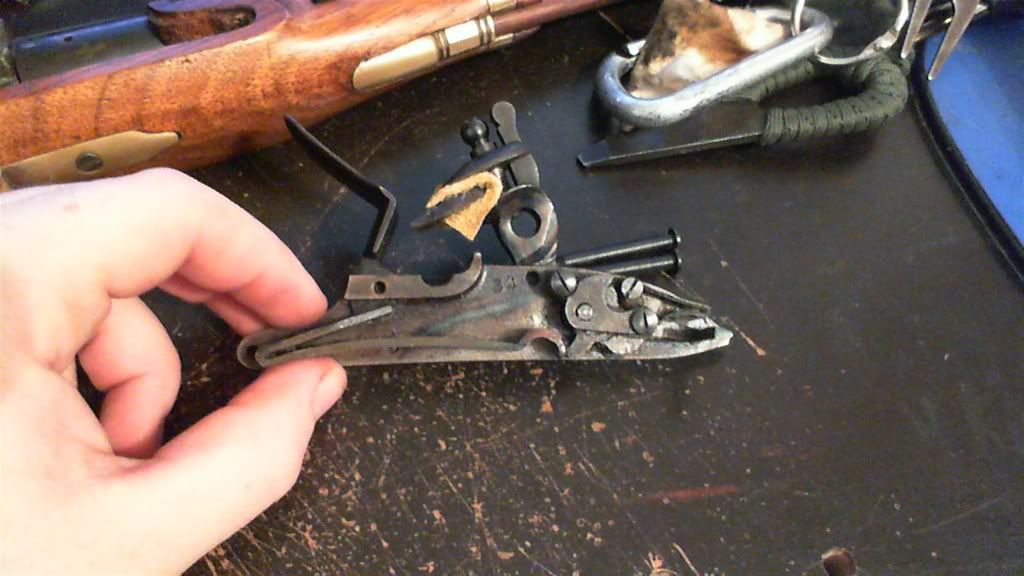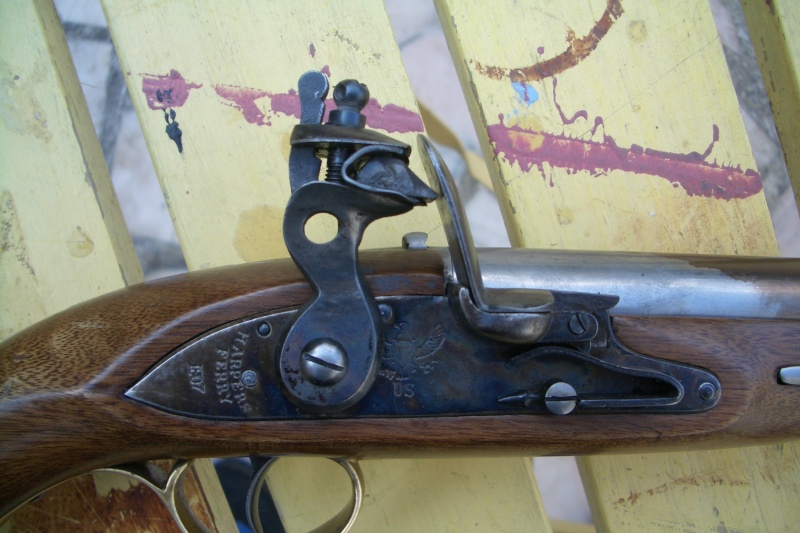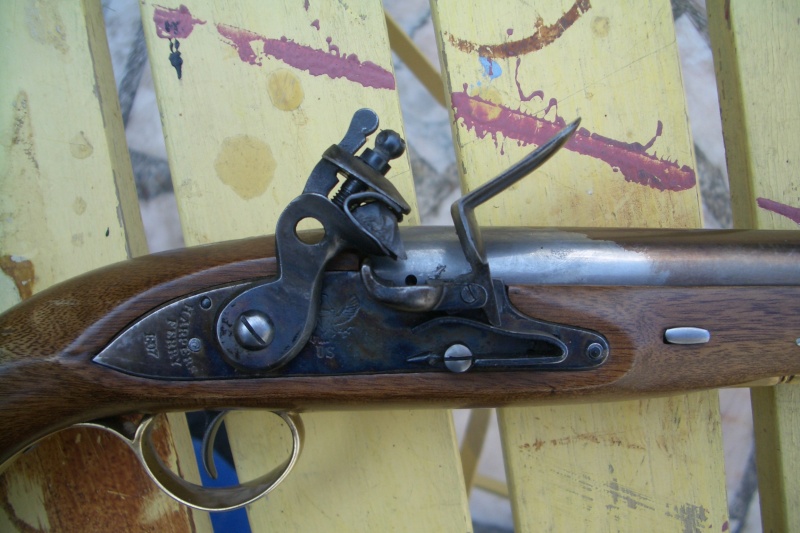I have an issue with another one of my guns. This time it's the Harpers ferry. I bought this thing a while back and had a few good times out at the range with it but it was always tough to get it to throw enough sparks to get it to go off. Now it's not throwing any at all with any flint I put in it. I put a brand new English flint in it and it only sparks about half the time.

I took it down to the log cabin and they comforted my fears that the main spring is shot. It's always had a light spring on it but I guess it's just gotten to bad to use now. I was hoping all I needed to do was harden the frizzen but no such luck, it's the spring. Any one know how I can fix it? The spring is intact it just doesn't have enough resistance.

I took it down to the log cabin and they comforted my fears that the main spring is shot. It's always had a light spring on it but I guess it's just gotten to bad to use now. I was hoping all I needed to do was harden the frizzen but no such luck, it's the spring. Any one know how I can fix it? The spring is intact it just doesn't have enough resistance.







